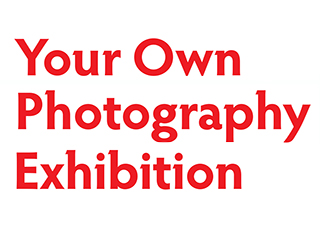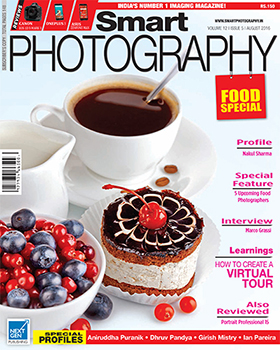 Do you wish to organise your own photography exhibition, but do not know where to start? Raj Lalwani answers the basic questions that might come across your mind.
Do you wish to organise your own photography exhibition, but do not know where to start? Raj Lalwani answers the basic questions that might come across your mind.
The feeling of seeing one’s own photographs on a wall is extremely special and rewarding. In fact, an exhibition will help get your work noticed, and may open up future commercial prospects. However, while planning one of your own there may be a number of doubts you may have in mind. Here are some basic questions that you need to address, to make sure that your exhibition is a success.
When Should I Start Planning?
Ideally, start planning at least 9–10 months in advance, as there may be a lot of arrangements that needs to be taken care of. Make a checklist of all the things you need to do, and the approximate time it may take for the same. Approaching venues and selecting one may take the most amount of time.
Keep a good buffer time for finalising the pictures and deciding the finer details like the inauguration ceremony. After all preparations are done, spend adequate time to promote the exhibition, so that you can confirm the presence of maximum invitees, well in advance.
Where Should it be Held?
While choosing a venue, make sure that you consider your budget, number of pictures, the people who will be invited, and so on. A gallery dedicated to art or purely photography is a good choice, because it will automatically attract an audience inclined towards photography. Some galleries allow you to exhibit at a subsidised cost or even free, but they usually have a very strict selection procedure, and exhibit only excellent work.
Before you narrow down on one option, study it carefully and cover all of the above factors. Remember to check on the venue’s availability, because o en, these galleries are booked up to a year in advance.
Another important factor to consider is the venue’s lighting. If you are planning to have glass-mounted frames, the light must not cause too many reflections while viewing the image. Also, figure out how exible the venue is in terms of the way you can present your work (for example, convetional frames versus something more creative like using fish wire and hooks) Depending on your target audience, you can also opt for unconventional venues like restaurants, theatres, libraries, and cultural festivals.
How Do I Select My Photographs?
It is natural for photographers to get a ached to their photographs, which is probably why they do not look at the process of shooting and editing objectively enough. So, it is always advisable to ask a senior-or someone whose work you respect-to help you select the photographs.
Even if you are doing the selection yourself, there is no harm in taking a friend’s opinion. This will help you gauge the reaction of the general viewers at the exhibition. In the end, ensure that each photograph adds value to your collection, and that your pictures come across as a cohesive body of work.
Of course, a number of galleries have a curator who would be actively involved in the selection of the photographs. This is especially true in the case of galleries that have chosen to showcase your work.
How do I Print my Photographs?
For a fine-art exhibition, consider archival prints. While they can be extremely expensive, they will maintain a high standard of quality for a number of years, and are recommended if you wish to use the exhibition to get prospective buyers. If this is your first exhibition, get matte, glossy or metallic prints instead. While matte is not susceptible to fingerprints and has a longer life span, glossy offers more vibrant colours. Metallic is more expensive, but is preferred for printing photographs that have a lot of colours. There is no right or wrong here, as different kinds of photographs look better in different papers. So, get a test print and find out which appeals to your aesthetic taste. Maintain uniformity in the size of the prints. To break the monotony, print some images in a larger size and some smaller. But if this is done, you need to be extremely careful that the difference in size must not come across as chaotic and unplanned.
How Do I Frame Them?
Frames can either be wooden or metal, and are available in a number of designs and patterns. A plain black frame is recommended—it not only looks professional, but it also does not distract from your photograph. A mat board must cover the edges of your print, to prevent it from sticking to the glass. Alternatively, look for hand-made frames, which could be a lot cheaper if you need many. Another inexpensive option is to not use glass and a conventional frame at all. Just a white mat board around the pictures can look elegant too.
How Do I Arrange the Pictures?
The order in which a viewer sees a set of images determines the impact it has on him/her. So pay careful attention to the visual flow of the exhibition. The number of photographs you display, the space between each photograph, the manner in which you use the exhibition space are all factors that contribute to the visual flow. Additionally, the opening as well as the last photographs must best represent the overall body of your work. The manner in which the photographs are put up must not be to disparate, and must lead the viewer in a particular direction.
How Do I Inaugurate?
How you wish to open your exhibition depends entirely on your personal taste and budget. Some prefer a quiet religious ceremony, like breaking a coconut and a small prayer. Some others have a preview night that includes a small party for a select audience, with snacks and cocktails.
Is There Anything More I Can Do?
There are several ways in which you can enhance the experience of your exhibition. You can put up a synopsis of your work—what inspired the subject, some background and how you decided to interpret it. Also include a brief note about yourself! You can also use other forms of media to add to the feel; for instance, the sound of birds singing at an exhibition that displays bird photographs.
How Do I Ensure That People Attend?
After completing all preparations, you need a month or two to inform as many people as possible. While word-of-mouth publicity works wonders, make use of social networking and community websites like Flickr, Facebook and Orkut.
Inform the media too. Find out the email ids and phone numbers of newspapers and magazines. Draft a press release that contains sample photographs and everything else about the exhibition.
Email it a week before the event and call them up a day in advance. Make use of the venue’s public relations machinery, too.
Organising an exhibition is not a difficult task, but it requires dedicated planning. Treat it like an important event in your life that you need time to prepare for. If you keep all these things in mind, your exhibition is guaranteed to be a success.

